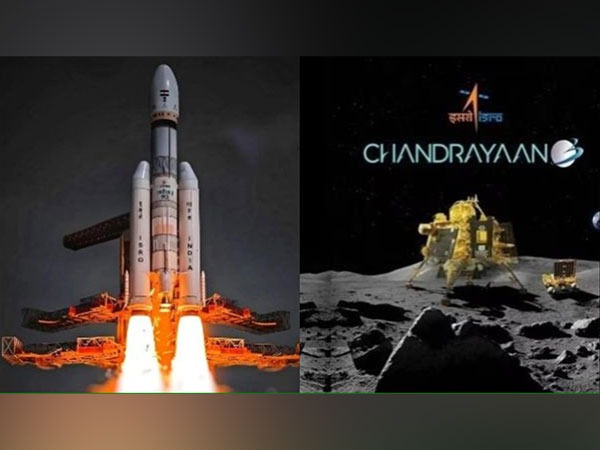
New Delhi: Indian space odyssey touched a new high in 2023 after it became the first country to successfully soft land an unmanned spacecraft on the moon’s south pole with its Chandrayaan-3 mission.
India’s space research agency, the Indian Space Research Organisation (ISRO), also attracted international admiration after it successfully conducted the Aditya-L1 mission to observe the dynamics of the Sun’s chromosphere and corona last year.
India’s union cabinet recently passed a resolution on the success of the lunar mission, calling it a victory for the country as well as ISRO.
Chandrayaan-3 mission’s success also received appreciation from the global leaders.
Taking forward the country’s “walk to space”, ISRO started 2024 with a big announcement as the space agency declared the names of four astronauts for its Gaganyaan mission, which is India’s first human space flight programme.
Besides Gaganyaan-1 programme, the ISRO also unveiled a compelling line-up of several other ground-breaking missions in 2024.
India’s space research agency’s ventures — from probing the mysteries of cosmic X-rays to launching India’s first X-Ray Polarimeter Satellite — have promised to redefine the understanding of Earth, explore the depths of space, and set the stage for unprecedented human spaceflight.
PSLV-C58 with XPoSat
ISRO’s 2024 started with the successful launch of the Polar Satellite Launch Vehicle (PSLV-C58) carrying XPoSat, the country’s first X-Ray Polarimeter Satellite.
The Indian space research agency lifted off PSLV-C58, which successfully launched XPoSat satellite into an Eastward low inclination orbit on January 01.
According to ISRO, X-ray Polarimeter Satellite or XPoSat is the first dedicated scientific satellite from ISRO to carry out research in space-based polarisation measurements of X-ray emission from celestial sources.
It carries two payloads namely POLIX (Polarimeter Instrument in X-rays) and XSPECT (X-ray Spectroscopy and Timing), as per ISRO.
ISRO said the main objectives of this mission include measuring polarisation of X-rays in the energy band 8-30keV emanating from about 50 potential cosmic sources, carrying out long term spectral and temporal studies of cosmic X-ray sources in the energy band 0.8-15keV, and conducting polarisation and spectroscopic measurements of X-ray emissions from cosmic sources.
NISAR
The NASA-ISRO Synthetic Aperture Radar (NISAR) mission represents a pathbreaking collaboration between India’s ISRO and the United States’ NASA.
According to ISRO, NISAR is a Low Earth Orbit (LEO) observatory being jointly developed by the two leading space agencies.
NISAR’s dual band (L and S) Synthetic Aperture Radar (SAR) will map the entire globe in 12 days and provide spatially and temporally consistent data for understanding changes in Earth’s ecosystems, ice mass, vegetation biomass, sea level rise, ground water and natural hazards including earthquakes, tsunamis, volcanoes and landslides, says ISRO.
The mission was scheduled to be launched in January this year, but some modifications to a large deployable antenna on the radar spacecraft will delay its launch, likely to the second half of the year, according to a Space News report.
GSLV-F14/INSAT-3DS
The launch of the GSLV-F14/INSAT-3DS mission was accomplished on February 17.
According to ISRO, the GSLV, in its 16th mission, aims at deploying the INSAT-3DS meteorological satellite into the Geosynchronous Transfer Orbit (GTO).
INSAT-3DS is a crucial communication satellite within the Indian National Satellite System (INSAT) series, and its primary mission is to monitor Earth’s surface, carry out Oceanic observations and its environment in various spectral channels of meteorological importance, provide the vertical profile of various meteorological parameters of the Atmosphere, provide the Data Collection and Data Dissemination capabilities from the Data Collection Platforms (DCPs), and provide Satellite Aided Search and Rescue services.
Gaganyaan 1
In a collaborative effort between ISRO and Hindustan Aeronautics Ltd (HAL), Gaganyaan-1 mission envisages demonstration of human spaceflight capability by launching crew members to an orbit of 400 km for a three-day mission and bring them back safely to earth, by landing in Indian sea waters.
According to ISRO, the project is accomplished through an optimal strategy by considering inhouse expertise, experience of Indian industry, intellectual capabilities of Indian academia and research institutions along with cutting edge technologies available with international agencies.
Mangalyaan-2 (MOM 2)
ISRO’s ambitious sequel to its successful Mars mission, Mars Orbiter Mission 2 (MOM 2) — named Mangalyaan-2, is aimed at studying the surface, atmosphere, and climatic conditions of Mars.
This mission will equip the orbiter spacecraft with advanced scientific instruments, including a hyperspectral camera, magnetometer, and radar.
According to ISRO, Mangalyaan-2 mission is a testament to India’s expanding prowess in planetary exploration.
X-ray Polarimeter Satellite
X-ray Polarimeter Satellite or XPoSat is the first dedicated polarimetry mission of India to study various dynamics of bright astronomical X-ray sources in extreme conditions.
ISRO says the spacecraft will carry two scientific payloads in a low earth orbit.